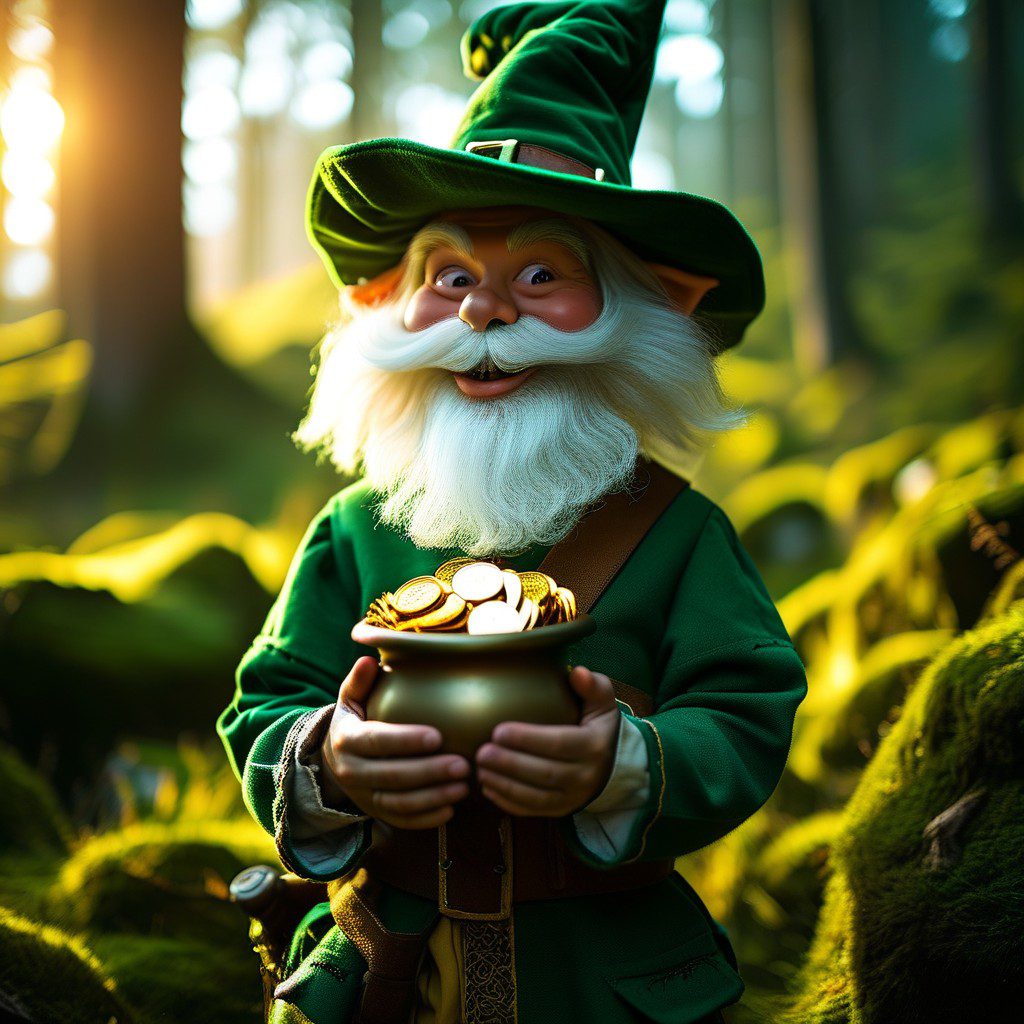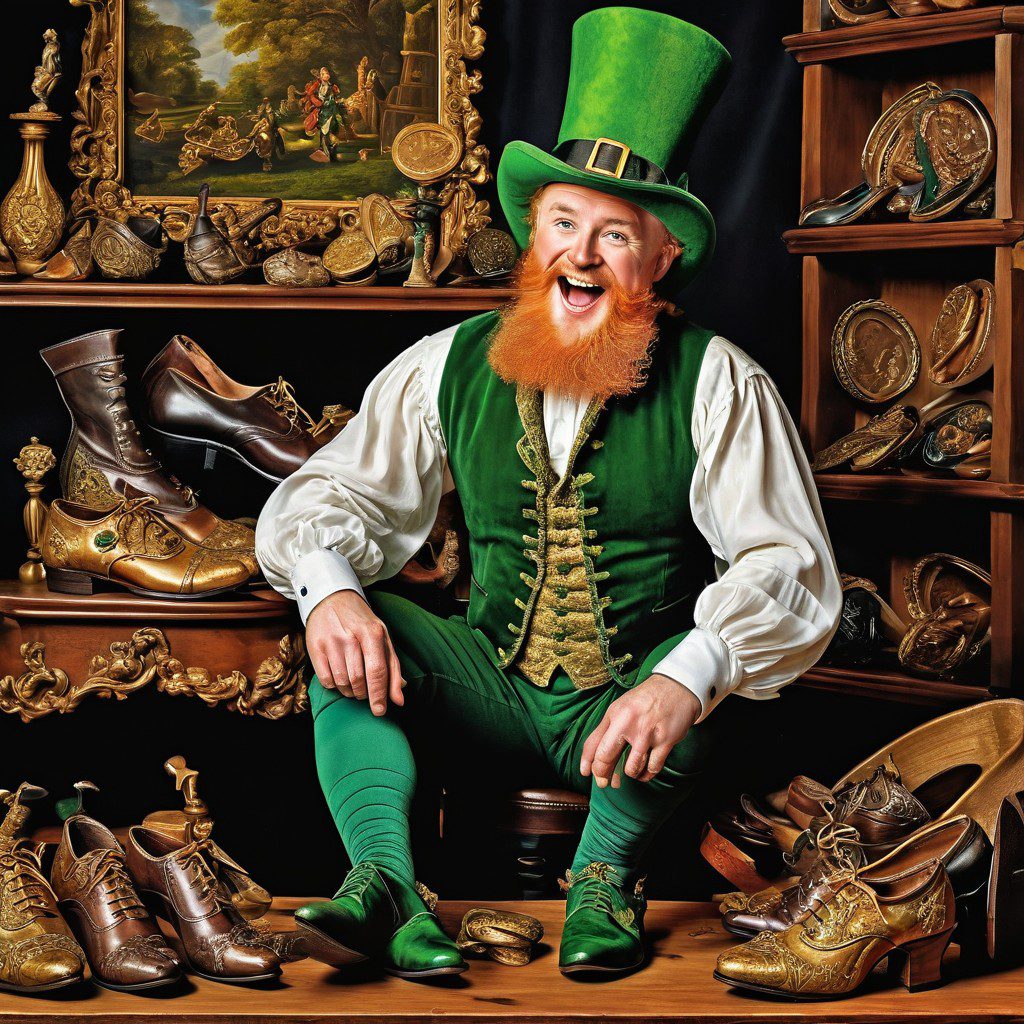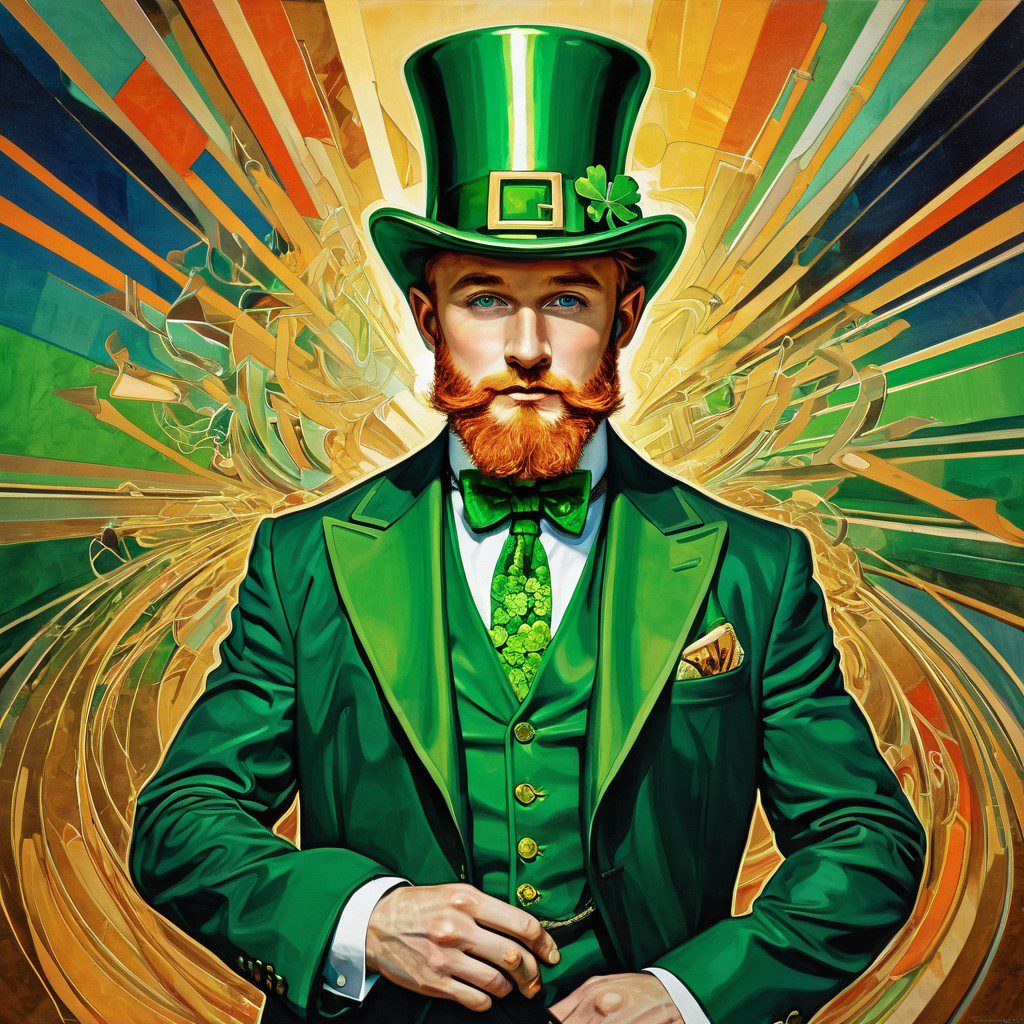
The leprechaun is one of the most iconic figures in Irish folklore. Known for their mischievous nature, hidden pots of gold, and clever tricks, these small, elusive creatures have captured the imagination of people worldwide. Often depicted as bearded old men dressed in green coats and buckled shoes, leprechauns are not only symbols of Irish culture but also represent the mysterious, magical side of the Irish landscape.
Leprechauns: The Tricksters of Irish Mythology
The leprechaun is one of the most iconic figures in Irish folklore. Known for their mischievous nature, hidden pots of gold, and clever tricks, these small, elusive creatures have captured the imagination of people worldwide. Often depicted as bearded old men dressed in green coats and buckled shoes, leprechauns are not only symbols of Irish culture but also represent the mysterious, magical side of the Irish landscape.
In this blog, we’ll explore the origins of the leprechaun in Irish mythology, its evolution through history, and how it has been portrayed in modern culture. Whether you’re chasing rainbows in search of their legendary treasure or simply curious about the myths surrounding these pint-sized tricksters, there’s much more to the leprechaun than meets the eye.
The Origins of the Leprechaun: Celtic Roots
Leprechauns are part of a wider group of mythical creatures in Irish folklore known as the “Aos Sí” (pronounced “ees shee”), a supernatural race often considered the spirits of nature or the remnants of ancient gods. The Aos Sí are beings that inhabit the Otherworld, a parallel dimension closely connected to the natural environment. Leprechauns are one of the most well-known members of this supernatural race, but they are not gods or warriors—instead, they are solitary, crafty shoemakers with a penchant for mischief.
Etymology of the Leprechaun
The word “leprechaun” is believed to come from the Old Irish word “luchorpán”, meaning “small body.” This reflects their diminutive size, as leprechauns are typically described as being no taller than a child, usually between two and three feet. The term likely evolved over time, with variations appearing in different parts of Ireland.
One early reference to leprechauns comes from the “Echtra Fergus mac Léti” (The Adventure of Fergus, Son of Léti), a medieval Irish text from the 8th century. In this story, the King of Ulster, Fergus mac Léti, encounters a group of leprechauns who attempt to drag him into the sea. Though Fergus captures the creatures, he eventually releases them in exchange for granting him the ability to breathe underwater. This tale shows the early mischievous nature of the leprechaun, even as far back as ancient Irish lore.
Leprechauns in Irish Folklore: Mischief and Magic
Leprechauns are widely known as tricksters in Irish folklore. Though they are not malevolent, they enjoy playing pranks on humans and have a reputation for being cunning and elusive. They are solitary creatures, often living in remote places such as fairy forts (ancient, circular mounds of earth believed to be inhabited by fairies) or hollowed-out trees.
The Shoemaking Tradition


One of the most unique aspects of leprechaun folklore is their occupation as shoemakers. In nearly all Irish stories, leprechauns are depicted as cobblers, perpetually working on a single shoe. Unlike other supernatural beings, they are not concerned with grandiose powers or ruling over the Otherworld. Instead, they focus on their craft, which has a magical element to it. The sound of their hammering away at shoes can often be heard before they are seen.
Why shoes? Some interpretations suggest that their shoemaking is tied to their wealth and that they are making shoes for the Aos Sí, who are constantly dancing and wearing out their footwear. Others believe that their work ethic as cobblers reflects their hidden nature—always busy, always hidden, always on the move.
The Pot of Gold
Perhaps the most famous aspect of leprechaun lore is their legendary pot of gold, which is said to be hidden at the end of a rainbow. The idea of leprechauns hoarding treasure stems from their association with wealth and craftsmanship. In Irish folklore, leprechauns are considered guardians of buried treasure left by ancient conquerors or marauders. They are said to hide their gold in secret places, and catching a leprechaun could lead to a reward—if you can outwit them.
Capturing a leprechaun is no easy task, though. If a human manages to catch one, the leprechaun must grant them three wishes or reveal the location of their hidden treasure. However, they are masterful tricksters, often deceiving or confusing their captors into releasing them before revealing the treasure’s location.
Leprechaun Tricks and Deceptions
Leprechauns are renowned for their clever tricks. They frequently use misdirection and illusion to escape capture, and even when a human thinks they’ve outsmarted a leprechaun, the creature often finds a way to turn the tables.
One classic tale involves a man capturing a leprechaun and demanding to be shown the location of his gold. The leprechaun leads the man to a field and points to a specific bush, saying the gold is buried beneath it. The man, not having a shovel with him, ties a red ribbon around the bush to mark its spot and hurries home to fetch his digging tools. When he returns, he finds that every bush in the field has been tied with a red ribbon, making it impossible to find the treasure.
These stories reinforce the idea that while leprechauns may be able to grant wishes or reveal treasure, they are cleverer than most humans and enjoy tricking their captors.


The Evolution of the Leprechaun: From Folklore to Popular Culture
The image of the leprechaun has evolved significantly over time. In early Irish folklore, leprechauns were not the cheerful, green-clad figures we think of today. Instead, they were often described as wearing red coats, a color traditionally associated with faeries. Over time, however, their clothing shifted to green, likely as part of the 19th-century Irish nationalist movement, which adopted green as the color of Ireland.
Leprechauns in Literature
The 19th century saw the leprechaun myth gain prominence in literature and culture, particularly through the works of Irish writers who collected and published Irish folklore. Thomas Crofton Croker, an Irish antiquarian and folklorist, published Fairy Legends and Traditions of the South of Ireland (1825), which featured tales of leprechauns and other faerie folk. Croker’s work helped to spread leprechaun stories outside of Ireland, particularly in England and the United States.
As the leprechaun became more prominent in literature, its mischievous nature was emphasized, and it was often portrayed as a symbol of the unpredictable, sometimes capricious, aspects of the natural world. Despite their small size, leprechauns could outsmart even the cleverest humans, using wit and guile to protect their treasure and maintain their independence.
Leprechauns in American Culture
Leprechauns began to take on a new role in the 19th and 20th centuries, particularly in Irish-American culture. As Irish immigrants brought their folklore and traditions to the United States, the leprechaun became a symbol of Irish identity and heritage. It was during this time that the image of the leprechaun shifted from its earlier depictions in Irish folklore to the more familiar figure of the cheerful, green-clad trickster we know today.
One major factor in this transformation was the commercialization of the leprechaun as a symbol of St. Patrick’s Day, particularly in America. By the 20th century, leprechauns were increasingly used in advertisements, merchandise, and celebrations associated with Irish culture. The most famous example is the Lucky Charms cereal mascot, Lucky the Leprechaun, introduced in 1964, which solidified the image of the leprechaun as a symbol of good luck and whimsical fun.
Leprechauns in Film and Television
The leprechaun has also appeared in a variety of films, television shows, and cartoons, often as a comic or mischievous character. One of the most famous portrayals is Darby O’Gill and the Little People (1959), a Disney film that features leprechauns as magical, playful beings who trick the film’s protagonist.
On the darker side, the Leprechaun film series (beginning in 1993) took the leprechaun myth in a more sinister direction, portraying the creature as a malevolent, vengeful being. In these horror-comedy films, the leprechaun seeks to reclaim his stolen gold and exact revenge on anyone who crosses him.
These portrayals, though varied, continue to draw on the core characteristics of the leprechaun: its trickster nature, its obsession with gold, and its connection to magic.
Leprechauns in Irish Symbolism: More Than Just a Trickster
While leprechauns are often portrayed as mischievous tricksters, they also symbolize something deeper—Ireland’s rich cultural heritage, resilience, and the connection to the natural world. As shoemakers and treasure keepers, leprechauns represent the Irish people’s traditional craftsmanship, their wit, and their ability to endure through hard times with humor and resourcefulness.
In a sense, leprechauns embody the Irish spirit—resourceful, witty, and always capable of outsmarting those who underestimate them. They are linked to the land and the ancient faerie traditions that predate modern Ireland, making them a symbol of both the past and the enduring magic
of Irish folklore.
Strengths and Weaknesses of Leprechauns
Like many mythical creatures, leprechauns possess unique strengths and abilities but also have their vulnerabilities.
Strengths:
- Cunning and Intelligence: Leprechauns are known for their quick wit and clever tricks. They are masterful deceivers, able to outsmart humans who try to capture them or steal their gold.
- Magical Abilities: Though not as powerful as other faerie folk, leprechauns possess a certain level of magic, particularly in the form of illusions and misdirection. This magic helps them remain elusive and protects their hidden treasures.
- Wealth: Leprechauns are famous for their hidden pots of gold, making them symbols of both wealth and prosperity. While they rarely share their fortune, they have access to immense riches.
Weaknesses:
- Solitary Nature: Unlike other faeries, leprechauns are solitary beings, which can make them vulnerable to capture or manipulation if they are caught off-guard.
- Outwitted by Persistence: Although leprechauns are skilled tricksters, their cleverness can sometimes be outmatched by human persistence. In some stories, if a captor refuses to be tricked, the leprechaun is forced to grant wishes or reveal the location of his gold.
- Bound by Rules: While they are masters of deception, leprechauns are often bound by certain rules of their folklore. For example, if a person catches a leprechaun and does not fall for their tricks, the leprechaun must fulfill their request, usually by revealing where the treasure is hidden or granting a wish.
Conclusion: The Enduring Legacy of the Leprechaun
From their origins in ancient Irish mythology to their place in modern pop culture, leprechauns have evolved into much more than just trickster faeries. They symbolize the wit, resilience, and mystery of Ireland itself, while continuing to captivate people around the world with their legendary treasure and clever tricks.
Whether portrayed as elusive shoemakers guarding pots of gold or as modern mascots of luck, leprechauns remain one of the most enduring figures in folklore. Their legacy, rooted in the mists of Ireland’s ancient past, continues to thrive today, a reminder of the magic and mischief that still lurks in the world, just waiting to be found at the end of the rainbow.
